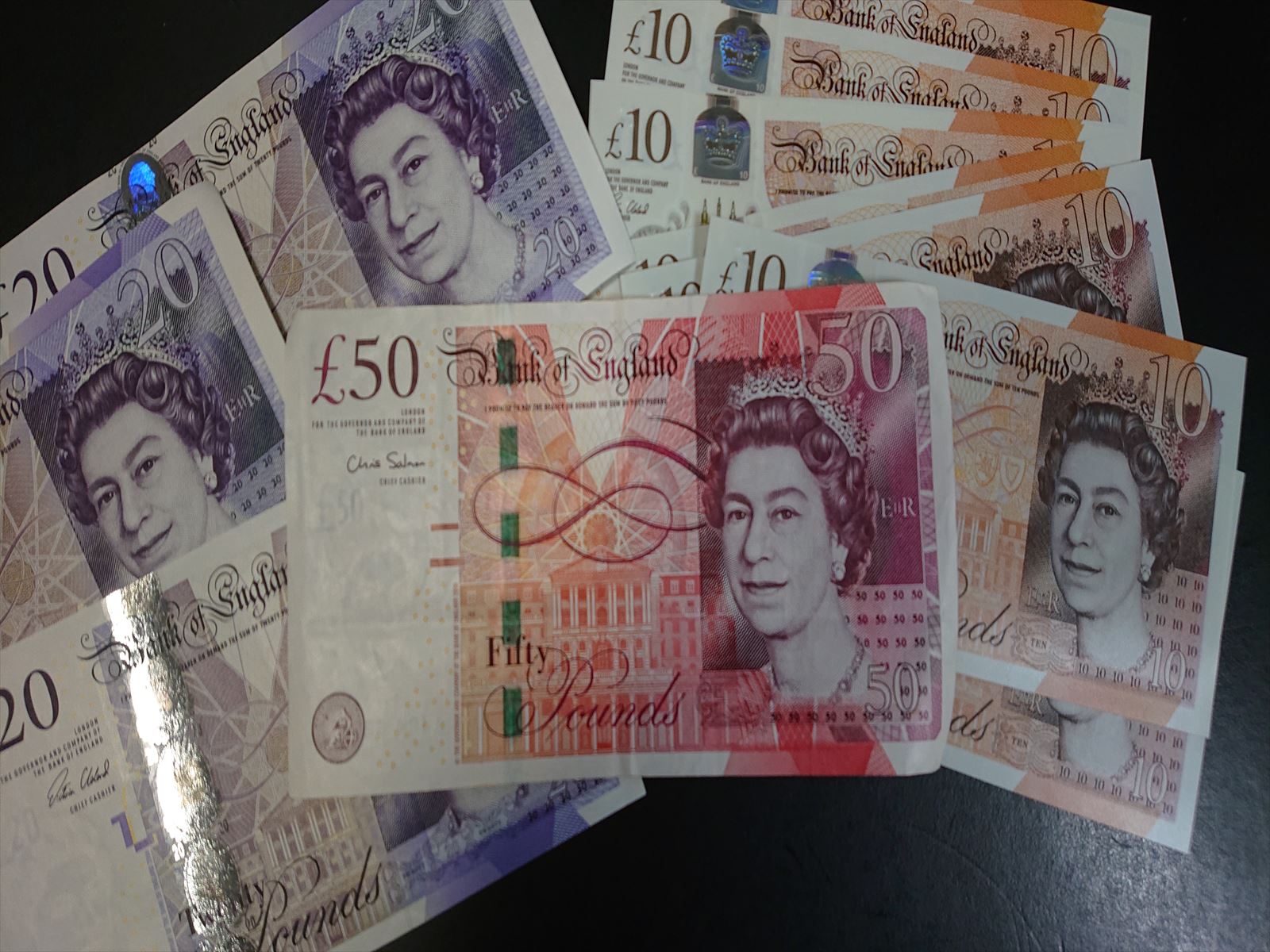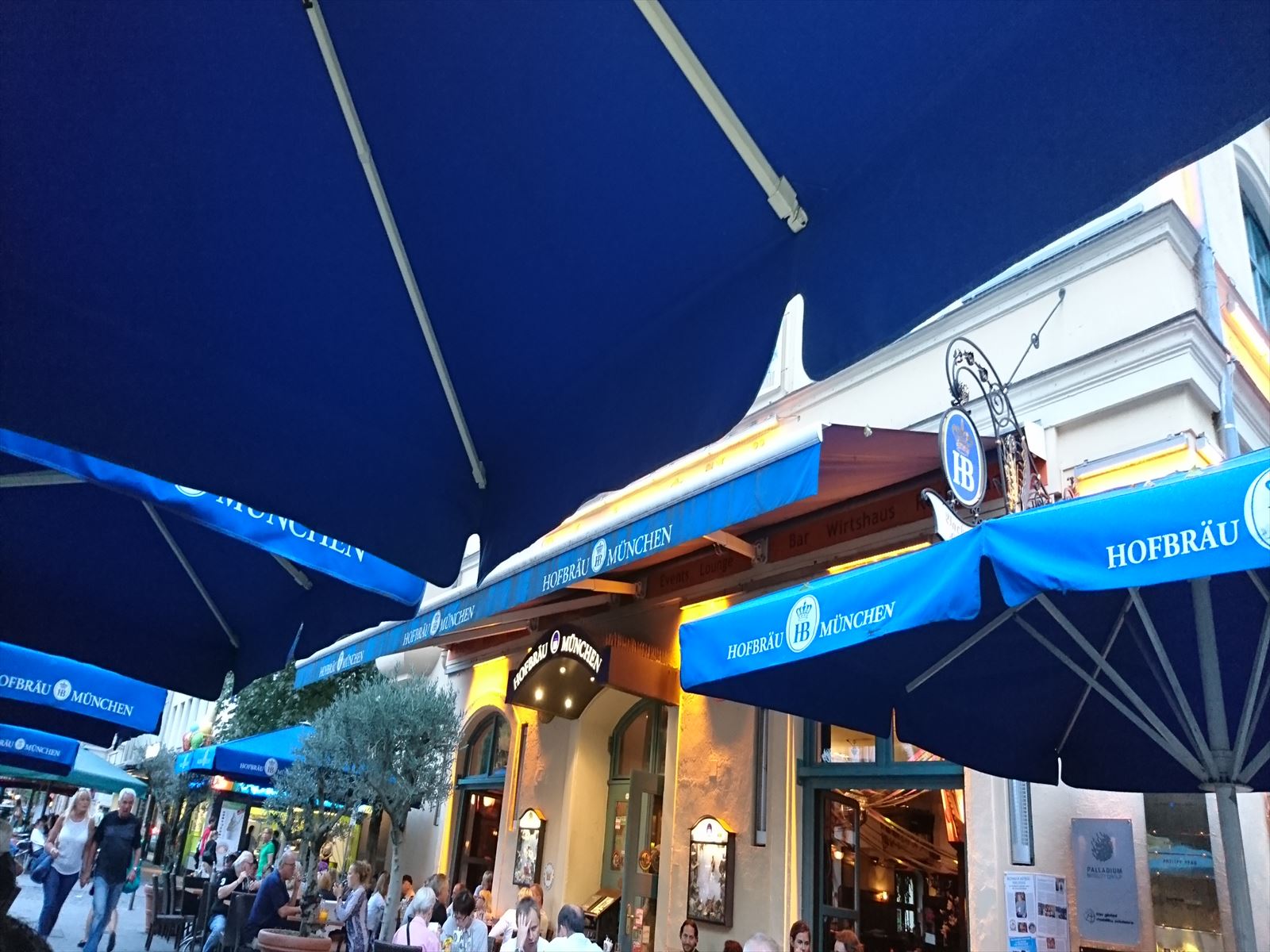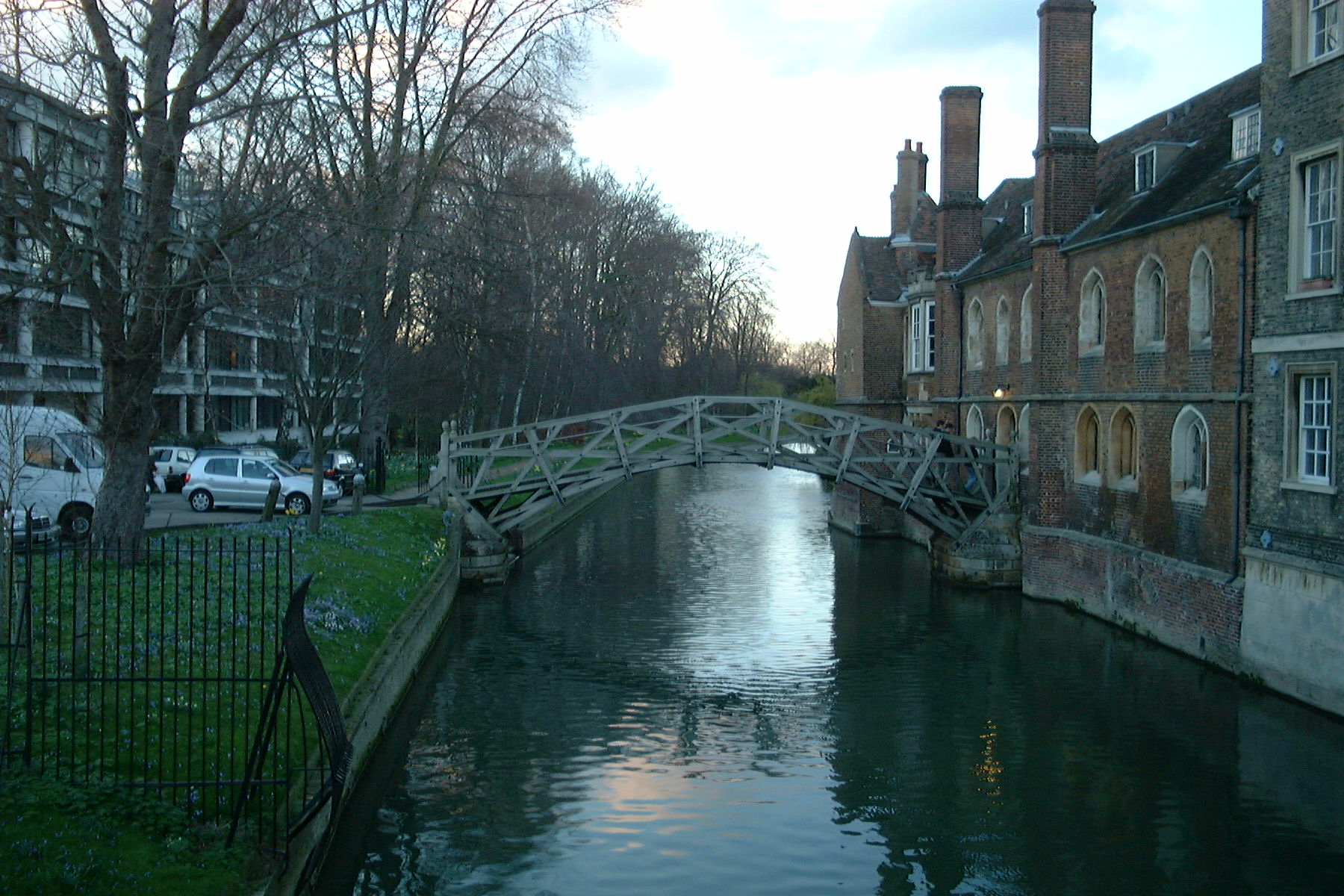リスク対応策 2021.01.01
RM54 AIの父、アラン・チューリング Alan Turing,the father of AI
For those who prefer to read this column in English, the Japanese text is followed by a British English translation, so please scroll down to the bottom of the Japanese text.
本コラムの「RM29-ターナー(大変革時代)JMW Turner (A time of great change has arrived)」で、経済学者アダム・スミスに代わって新20ポンド札の顔となったのは、画家JMW ターナーと記したが、英国で一番使い勝手の良い紙幣はこの20ポンド札であろう。
ポンドへ両替をする時、一般の旅行者は日本の貨幣価値と使用頻度から、「多くの20ポンド札」ではなく、「小額紙幣はある程度で、大半を高額紙幣にする傾向がある」と聞く、日本では「一万円札はどこでも使える」からであろう。しかし海外に行くと事情は大きく変わる、「一万円札程度の紙幣」を出すとジロジロと訝しげに見られ、表裏を入念に「偽札ではないか」とチェックされ、挙げ句の果てには「使えません」と突き返されることもある、これが海外である。
そういうこともあり、英国で「犯罪と脱税のための紙幣」と揶揄され嫌われたのが50ポンド札である。一時は、その不要説も飛び交ったが、何とか発行に漕ぎ着き、2021年末までには市場に流通すると報道されている。

今日は、2021年の元日である。しかし、新型コロナの感染拡大によって、いつもの年とは、世界が、日本が、「新年を迎える装い」が異なっている元日である。上の写真は、2019年9月ロンドンに出張した際、持ち帰ってきたポンド紙幣である。「すぐまたロンドンに行くから」と次の出張のためにそのまま持っていることを20年も続けてきて、1年もロンドンに行けないとは予想だにできない1年が2020年であった。この出張残金220ポンドの内訳は、上述のとおり、非常用のための50ポンド1枚、そして20ポンド4枚、10ポンド9枚である。
Today is the first day of the year 2021. However, due to the spread of the new coronas(covid-19), it is a day when the world, and Japan, will not be “dressed for the New Year” in the same way as usual. The photo above shows the pound notes I brought back from a business trip to London in September 2019. After 20 years of holding onto the remaining pounds for the next business trip intact because “I’ll be in London again soon,” the one year I couldn’t have expected to go to London for a year was 2020.The balance of this business trip of £220 consisted of, as noted above, one £50 piece for emergency use, and four £20 pieces and nine £10 pieces.
「BBC News | Japan」の2019年7月15日号には以下の記事が掲載された。
イギリスの新しい50ポンド紙幣の肖像に、コンピュータ科学の先駆者で暗号解読者のアラン・チューリング(1912~1954年)が採用されることが明らかになった。イングランド銀行(英中央銀行)総裁が15日、発表した。
チューリングは第2次世界大戦中、ナチス・ドイツの暗号解読に多大な役割を果たし、連合国の勝利に貢献した。
イングランド銀行のマーク・カーニー総裁は、マンチェスターの科学産業博物館で新50ポンド札の顔を発表。「アラン・チューリングは傑出した数学者で、その業績は現在の私たちの暮らしに巨大な影響を与えた」と述べた。
「コンピュータ科学や人工知能(AI)の父として、そして戦争の英雄として、アラン・チューリングの貢献は、多岐にわたる画期的なものだった。現代の大勢が、その恩恵を受けている偉人だ」
1. 「ブレッチリー・パーク」誕生
ロンドンの北西約80キロ、バッキンガムシャーにその街と邸宅がある。街の名前は、ミルトン・キーンズ(Milton Keynes)、邸宅の名前はブレッチリー・パーク(Bletchley Park)である。屋敷には大きな庭園があるためパーク(Park)の名前が付いている。第二次世界大戦時、英国全土の鬼才、逸材がこの邸宅の一角に集められた。
1938年9月、ウィリアム・リドリーという人物を中心とした狩猟をおこなう一団が、ロンドンからブレッチリー・パークを訪れていた。 「リドリー狩猟団」と言われた一行であったが、実は「狩猟団」とは隠れ蓑であり、この邸宅と一帯は、一般的には「MI-6」の名前で知られている、英国秘密情報部(SIS: Secret Intelligence Service)によって購入されていたのである。 その目的は、コード名「ステーションX(10)」、政府暗号学校(GC&CS :The Government Code and Cypher School)を設立することだった。
英国は、映画「007」に象徴されるが、長年「機密情報(Intelligence)」の収集、分析、対応に多くの国富、人材を投じてきた。現在、英国政府には, 偵察衛星や電子機器を用いて国内外の情報収集や暗号解読業務を担当する情報機関として、「政府通信本部(GCHQ: Government Communications Headquarters)」がある。機密保持のため、組織上は「政府組織外」の機構となっていて、実質的には首相に直属する独立機関となっている組織である。その淵源となる機関が、この「政府暗号学校」である。
「学校」の名 が付けられているものの、実際には、海軍の暗号解読機関であった「ルーム40 (Room 40)」 と陸軍の軍情報部第1課(Military Intelligence, Section 1)のそれぞれの暗号解読チームを統括する形で、第一次世界大戦後の1919年に組織され、ロンドンを拠点として、各国の暗号解読に取り組んでいたが、台頭するナチス・ドイツとの戦争が起きた際、ロンドンが被害を受ける危険性を睨んで、万が一の避難先として「ステーションX」が用意されたのであった。ナチス・ドイツのロンドンへの空襲が激しくなるなか、その後、部隊はブレッチリー・パークに全面移転することになった。
この地が選ばれた理由は、「英国の頭脳」と言われる二つの大学がある街、オックスフォードとケンブリッジのちょうど中間地点にあり「優秀な頭脳」を集めやすかったからだと言われている。政府暗号学校では、すでに所属しているメンバーの紹介を頼りに更なる人材探をしていたが、開戦の切迫感が高まってくると暗号学校の上層部は様々なルートで暗号解読の素養があると思われる人材、言語学者、古典学者他を雇い入れた。このように増員ペースが急ピッチとなると、通常の建物では収容できず、ブレッチリー・パーク内には、プレハブ小屋(Hut)が続々と建てられ、「担当、所属はこのHutの後ろに数字を付けて呼ばれること」になっていった。

2.「エニグマ」の解読
1920年代、ドイツ軍は暗号機械「エニグマ(ドイツ語で「謎」の意味)」の運用を開始した。長年ドイツの脅威にさらされ、現に第二次世界大戦緒戦で占領されたポーランドでは、ドイツの暗号解読に躍起になっていたが、遂に1932年ポーランド暗号局の若手数学者マリアン・レイェフスキが、このエニグマ暗号の解読方式を発見、「ボンブ」と呼ばれる解読機を発明した。しかし、戦争が避けがたい状況のなか、常に変更されるエニグマの暗号についていくために必要なスタッフや設備がポーランドでは十分確保できないため、ポーランド政府は、「エニグマ暗号解読の秘密」を同盟国と共有して協力を得ることを決め、第二次世界大戦勃発の僅か2週間前、1939年夏、英仏の情報機関に「ポーランドが解読した手法」、解読機械を提供した。
こういった、ポーランドに於ける「暗号解読への数学者の起用」による成功を見た英国は、それまで「暗号の解読」という作業のため、軍人や言語学者を採用していたこと止め、暗号の数学的構造に組織的に取り組むため、数学者を積極的に採用した、その一人が、ケンブリッジ大学を卒業後、米国のプリンストン大学で博士号を取り、帰国していた、当時27歳のアラン・チューリングである。英国の海上補給線を脅かすドイツ海軍潜水艦Uボートの暗号を解読する部門、「Hut 8」の責任者となった彼は、「機械が作る暗号は機械だけが理解し得る」と主張し、ポーランドで使われていた解読機「ボンバ(Bomba)」の理論を発展させ、1940年春、エニグマの暗号解読機「ボム(Bombe)」を開発した。
しかし、それでもなかなか解読できないエニグマに苦悶していた解読者達の心情を掻きむしるように、戦場ではドイツ軍の攻撃が激化して、連動してエニグマ暗号による通信の数が劇的に増えていった。そうなると、暗号文を受け取るドイツの通信担当も忙殺され、色々なミスが多発、これら暗号解読に重要なヒントがいくつも与えられることになり、遂にドイツ海軍の「エニグマ」暗号の解読に成功したのである。
1940年8月には、チューリングが「改良版ボム(Bombe)」を開発、事態は更に画期的に前進した。また、1940年から翌年にかけ英国は、ドイツ潜水艦Uボートを捕獲して、暗号書等を入手した。これによって、発信から数時間のうちに暗号解読ができるようになったのである。更に暗号解読のスピードを上げるため、「改良版ボム(Bombe)」の製造が急ピッチで進められ、第二次世界大戦の終戦時には200台超が稼動、その操作には数千人があたったと言われている。しかし、ドイツは暗号の強化を図って新型暗号機「ローレンツ(Lorenz)」を開発した。この動きに対して、ローレンツの暗号を解くために開発された暗号解読機が、「コロッサス(Colossus)」と呼ばれ、「世界初のプログラムが可能なコンピュータ」と言われている。
1939年9月から6年間続いた第二次世界大戦であるが、もしチューリングを始めとした「ブレッチリー・パーク」での人々の奮闘がなければ、戦争は大幅に長期化、更に多くの人命が失われていたであろう。

これまで何度か訪れた、この「数学橋」(Mathematical Bridge)は、ケンブリッジ大学クイーンズカレッジにあり、木製の歩道橋の俗称、正式名称は単に「木造橋」である。アーチのように見えるが完全に真っすぐな木材で構成されて建設されていることが名前の由来。アイザック・ニュートン卿によって設計され、ナットやボルトを使わずに建設されたというのが、よく知られた言い伝えである。しかし、ニュートンは橋が建設される22年前の1727年に亡くなっているため、直接関与することはできなかった。
This “Mathematical Bridge”, which I have visited several times, located at Queen’s College, University of Cambridge, is the common name for a wooden pedestrian bridge, the official name being simply “Wooden Bridge”. It takes its name from the fact that it is constructed of perfectly straight timber that looks like an arch, but is constructed of perfectly straight timber.
The well-known legend is that it was designed by Sir Isaac Newton and built without nuts and bolts. However, Newton died in 1727, 22 years before the bridge was built, so he could not be directly involved.
3. チューリングの業績
チューリングは、「20世紀屈指の影響力を最も世界に与えた一人」と言えよう。暗号解読は彼の業績のごく一端に過ぎない。英国立物理学研究所では、初期のコンピュータの開発に着手、演算処理を機械に命令する「アルゴリズム」の概念確立に貢献、1936年、彼が発表した「On Computable Number(計算可能数について)」という論文で提示した概念は、「指示を与えられた(=プログラムされた)ことで他のあらゆる装置を模倣できること」であった。「チューリング・マシン」と呼ばれるこの概念は、現在全てのコンピュータ、スマートフォン、インターネットの土台になっていることから、彼は「人工知能(AI)の父」と呼ばれている。
チューリングは、同性愛者で、それを隠そうとしない人物であったと言われている。実は、英国では1967年まで同性愛行為は違法だったため、思わぬことからチューリングは1952年に同性愛行為により有罪となった。「収監されるか」、「ホルモン治療で男らしくなるか」の選択を迫られ、後者を選んだが、2年後の1954年、青酸化合物を染み込ませたリンゴをかじって41歳で自殺したのである。
第二次世界大戦の開戦から70年後、2009年英国のゴードン・ブラウン首相(当時)は、アラン・チューリングに対して、次のような公式の謝罪声明を発表した。
アランの功績により自由な人生を送っているすべての人を代表し、つつしんでお詫びいたします。申し訳ありません、あなたはもっと報われて然るべきでした。
2013年にはエリザベス女王から恩赦が与えられ、彼の名誉はその死から57年後ようやく回復されたのであった。チューリングの人生は、2014年「イミテーション・ゲーム/エニグマと天才数学者の秘密」(The Imitation Game)と題する映画が公開され大きな反響を呼んだ。映画の最後のシーンは、次の言葉で締めくくられていた。
エニグマの解読は戦争の終結を2年早め、1400万人以上の命を救ったと歴史家たちは言っている。
4. 「ブレッチリー・パーク」のその後
「ブレッチリー・パーク」は、終戦時の1945年の最盛期で約1万人の陣容を擁したと言われている。その人々は、第二次世界大戦のヨーロッパ戦線が終戦を迎えた、1945年5月8日、部隊の解散に際して、「ブレッチリー・パークでの仕事については一切口外しないこと」を約定させられた。
戦後、一部のメンバーが残り、「政府通信本部」(GCHQ: Government Communications Headquarters)が、暫くの間ブレッチリー・パークに置かれたが、「第二次世界大戦時の暗号解読部隊の存在」は一切公にされなかった。
そのため、「エニグマの解読」に奮闘した、チューリングら科学者は、次の仕事を探す際に「暗号解読に日夜従事していた期間」について何も触れることはできず、また「その実績も公表できず」に、「無為の年月を過ごしていた」としか判断されず、その結果、功績に見合った評価や待遇を戦後は受けられず、実は不遇の日々を送る事となった人たちが多かったのである。先のゴードン・ブラウン元首相の言葉にあるとおり、「英国のために暗号解読に心血を注いで戦った人たちに、英国は、相応の報いを与えることはなかった」のである。
彼らの偉業は、終戦から30年後、1974年「The Ultra Secret」(F. W. Winterbotham著)と題された、「エニグマ解読に立ち向かった暗号解読チームを描いた」一冊の本が出版されなければ、現在でも人々の知るところにはなっていなかったであろう。以後、戦時下の秘密が徐々に明らかにされ、1991年には、この地で働いた人々の要望を受け、「ブレッチリー・パーク・トラスト」が誕生、1994年には、ブレッチリー・パークの施設が博物館として一般オープン、筆者もこれまでに何度か訪れたことがある。
ドイツ海軍の暗号解読が行われた「Hut 8」にはチューリングの研究室が再現され、「紛失・盗難を防ぐため、自分のマグカップをチェーンでラジエーターにくくりつけていた様子」も見ることができる。さらに、この地で暗号解読に就いた人々へのオーラル・ヒストリー(口述歴史)を記録する活動も始まったのである。
暗号解読に挑んだ結果、チューリングをはじめ、多くの数学者や技術者によってコンピュータの新時代が開かれ、当時世界で最も進んでいた国が英国であったが、「その功績をすべて秘密にした」がために、世界のコンピュータ開発では英国が遅れを取ったと言える事態を招いてしまったのである。
今回のまとめ
世界を第二次世界大戦の災禍から早めに救った立役者が「暗号解読者」であった。ナポレオンが「孫子」を座右の書にしていたことは有名な事実であるが、いわゆる「孫氏の兵法」である「孫子・謀攻編」には、「彼を知り己を知れば百戦殆からず」という有名な言葉がある。「敵の実力、現状を正確に把握、そのうえで我が方のことをよくわきまえて戦えば、何度戦っても、必ず勝つことができる」ということである。
更に重要なのは、その言葉の次に続く、「彼を知らずして、己を知れば、一たび勝ちて、一たび負く。彼を知らず、己を知らざれば戦うごとに必ず敗る」という一節である。実に、綿密に戦略、戦術、作戦が示されていて、兵法の書としては古今東西で随一と評される書である。
このなかでは、戦いの原則は二つに集約されている、つまり「彼(敵)を知ること」と「己(味方)を知ること」である。チューリング達は、「彼(敵)を知ること」に心血を注ぎそして成功した。しかし、「己(味方)を知ること」はできなかった。「戦後、自分たちがどうなるか」について英国政府、軍部の考え、意識を知ろうとはしなかった。だから「不遇の戦後を送った」のではないだろうか。「己を知らざれば戦うごとに必ず敗る」という結果に陥ったのではないだろうか。無論、戦時下ゆえ「英国の勝利こそが最優先課題であった」からであろう。
しかし、これが企業で起きた場合には、その影響は、全従業員、全ステークホルダーに及ぶ。「彼(敵)を知ること」には多大な努力を惜しまないが、「己(味方)を知ること」が果たしてどこまで出来ているのであろうか。「己(味方)を知る」ということは、容易なようにみえて、実は様々なバイアスが掛かるために「彼(敵)を知る」以上に難しいものではないだろうか。自己認識が時として、「過小評価」と「過大評価」に陥りやすいからである。
米国の大統領選を見ても、「これが米国の大統領か」と思える発言、行動を見聞きすると権力者、実力者といわれる人物が陥る最も大きな罠は、「己を知る」ことの不足からくるものだと思えて仕方がない。自社の状況を具に検討する「キャプティブ設立を視野にした、本格的なリスクマネジメント」が求められる理由がここにあるのではないだろうか。
執筆・翻訳者:羽谷 信一郎
English Translation
Risk Management 54 – Alan Turing,the father of AI
In this column, “RM29 – JMW Turner (A time of great change has arrived)”, I wrote that the painter JMW Turner replaced the economist Adam Smith as the face of the new £20 note, which is probably the most useful note in Britain.
When exchanging money into pounds sterling, ordinary travellers tend to use mostly high denomination notes and only some small denomination notes, rather than “many £20 notes” due to the value of the money and frequency of use in Japan, as the “10,000 yen note can be used anywhere” in Japan. But in other countries, if you hand over a “local note in denominations of equal value to the 10,000 yen note”, you will be looked at quizzically, the front and back of the note will be carefully checked to see if they are counterfeit and, to top it all off, you may be turned away and told that you can’t use them.
It is for this reason that the £50 note was derided and disliked in the UK as “a banknote for crime and tax evasion”. For a while there was talk of its being unnecessary, but it has managed to be issued and will reportedly be in the market by the end of 2021.
The following article appeared in the 15 July 2019 issue of BBC News | Japan.
Computer science pioneer and cryptanalyst Alan Turing (1912-1954) will be the portrait on Britain’s new £50 note, it has been revealed. The Governor of the Bank of England announced the decision on 15 March. He said:
Turing played a major role in breaking Nazi Germany’s codes during World War II, helping the Allies win the war.
Mark Carney, Governor of the Bank of England, unveiled the face of the new £50 note at the Museum of Science and Industry in Manchester. He said:
“Alan Turing was an outstanding mathematician whose work has had a huge impact on the way we live today”.”As the father of computer science and artificial intelligence (AI), and as a war hero, Alan Turing’s contributions were manifold and groundbreaking. He is a great man from whom many of today’s people benefit.”
1. The birth of ”Bletchley Park”
The town and its mansion are located in Buckinghamshire, about 80 km northwest of London. The town’s name is Milton Keynes and the mansion is called Bletchley Park. The mansion has a large garden, hence the name Park. During the Second World War, the geniuses and talents from all over Britain were gathered in this corner of the house.
In September 1938, a hunting party led by a man named William Ridley was visiting Bletchley Park from London. Named by the people as “Ridley’s hunting party”, the “hunting party” was the ostensible face of the group, as the mansion and the area had been purchased by the British Secret Intelligence Service (SIS), commonly known as “MI-6”. The aim was to establish a code named “Station X(10)” , the Government Code and Cypher School (GC&CS).
Over the years, the UK has invested a great deal of money and manpower in collecting, analysing and dealing with intelligence, as symbolised by the film 007. The UK government currently has a Government Communications Headquarters (GCHQ), which uses reconnaissance satellites and electronic equipment to gather domestic and international intelligence and code-breaking services. For reasons of secrecy, the organisation is an “extra-governmental” body, effectively an independent body reporting directly to the Prime Minister. The originator of this is the Government Cryptologic School.
Despite the name, the school was actually created in 1919 after the First World War to oversee the code-breaking teams of both Room 40, the Navy’s code-breaking agency, and the Army’s Military Intelligence (Section 1). Organised as a peacetime regime, the unit was based in London, working to decipher codes in various countries, but in the event of war with a rising Nazi Germany, ‘Station X’ was prepared as a safe haven in case London was at risk of damage. As Nazi Germany’s bombing raids on London intensified, the troops were later moved entirely to Bletchley Park.
It is said that the reason for the choice of this location was that it was halfway between Oxford and Cambridge, the two universities known as the”brains of Britain”, making it easy to attract ”the best brains”. The Government Cryptology School relied on the referrals of its existing members to find further recruits, but as the imminent outbreak of war became more imminent, the upper echelons of the School recruited through various channels those they considered to have an aptitude for code-breaking, linguists, classical scholars and others. As the number of staff increased at such a rapid pace that the normal buildings could not accommodate them, prefabricated huts were built one after another in Bletchley Park, and “the person in charge and the affiliation are called by adding a number after this hut”.
2. Deciphering the “Enigma”
In the 1920s, the Germans began operating the “Enigma” (German for “mystery”) encryption machine.After many years of being threatened by Germany, and now occupied in the early stages of the Second World War, Poland was busy trying to decipher the German code, and finally, in 1932, a young mathematician from the Polish Bureau of Cryptography, Marian Lajewski, discovered a method of deciphering the Enigma code and invented a machine called the Bomb. However, with war inevitable, Poland did not have enough staff and equipment to keep up with the constantly changing Enigma code, so the Polish government decided to share the ”secret of Enigma code-breaking” with its allies to gain their cooperation, and just two weeks before the outbreak of World War II, the In the summer of 1939, the British and French intelligence services were provided with “Polish methods” and decoding machines.
Seeing the success of the use of mathematicians in deciphering the code in Poland, the British stopped employing military officers and linguists to decipher the code and actively employed mathematicians to tackle the mathematical structure of the code in a systematic way. One of these was Alan Turing, then 27, a Cambridge graduate who had returned home from Princeton University in the US for a PhD. He became head of Hut 8, the division responsible for deciphering the codes of German submarine U-boats that threatened Britain’s maritime supply lines, arguing that only machines could understand the codes created by machines. ‘Bombe’ was developed.
However, as if to stir the emotions of the decryptors, who were still struggling to decipher Enigma, the number of communications using the Enigma cipher increased dramatically in conjunction with the intensification of German attacks on the battlefield. As a result, the German correspondents who received the cipher messages were kept busy and many mistakes were made, which gave many important clues to the decipherment of the cipher, and finally the German Navy’s Enigma cipher was successfully broken.
In August 1940, Turing developed an “improved version of Bombe”, which took things to another level of breakthrough. In 1940 and the following year, the British also captured a German submarine U-boat and obtained the code book and other information. This made it possible to decipher the codes within a few hours of transmission. To further speed up the code-breaking process, improved versions of the Bombe were manufactured at a rapid pace, and by the end of the Second World War over 200 were in operation, with thousands of people working on them. However, Germany developed a new cryptographic machine, “Lorenz”, in an attempt to strengthen the code. The code-breaking machine developed to break Lorenz’s code was called the “Colossus”, and is said to be the world’s first computer capable of being programmed.
The Second World War lasted for six years from September 1939, but if it hadn’t been for the efforts of Turing and others at “Bletchley Park” the war would have been significantly prolonged and many more lives would have been lost.
3. The performance of Turing
Turing can be described as “one of the most influential people of the 20th century to have had the greatest influence on the world”. Cryptography is only a small part of his achievements.At the National Physical Laboratory in England, he began developing the early computers and helped establish the concept of “algorithms” for ordering machines to perform arithmetic operations. In 1936, in a paper entitled ”On Computable Number”, he presented the concept that it could imitate all other devices by being given instructions (i.e. programmed), and this was called the ”Turing machine” , is now the foundation of all computers, smartphones and the internet, which is why he has been called the “father of artificial intelligence'”(AI).
Turing is said to have been a homosexual, and one who never tried to hide it. In fact, homosexual acts were illegal in the UK until 1967, so, unexpectedly, Turing was convicted of homosexual acts in 1952. Given a choice between “imprisonment” and “hormone treatment to make me more manly”, he chose the latter, but two years later, in 1954, he committed suicide at the age of 41 by biting an apple impregnated with cyanide.
In 2009, 70 years after the outbreak of World War II, Britain’s then Prime Minister Gordon Brown issued a public apology to Alan Turing, stating:
On behalf of all those who have lived a life of freedom because of Alan’s achievements, I would like to offer my deepest apologies. I am sorry and you deserved better.
In 2013, he was pardoned by Queen Elizabeth and his honour was finally restored 57 years after his death. Turing’s life made a huge splash with the release of a film in 2014 entitled “The Imitation Game: The Enigma and the Secret of the Mathematician Genius”. The final scene of the film ended with the following words.
Historians say the deciphering of Enigma hastened the end of the war by two years and saved the lives of more than 14 million people.
4. What happened to ”Bletchley Park” afterwards
At its peak in 1945, Bletchley Park was said to have held around 10,000 staff. On 8 May 1945, at the end of the Second World War on the European front, when the unit was disbanded, they were made to promise that they would not tell anyone about their work at Bletchley Park.
After the war, the Government Communications Headquarters (GCHQ) was placed in Bletchley Park with some members remaining, but no mention was made of “the existence of a World War II code-breaking unit”.
So Turing and the other scientists who had worked so hard to “crack Enigma” were judged to have spent “years of idleness” with no mention of their “days and nights working on code-breaking” and no “achievements to disclose” when looking for a new job, and as a result they were not given the recognition or treatment commensurate with their achievements. Many of them did not receive it after the war, and in fact, many of them had to live in ill-fated circumstances.In the words of former Prime Minister Gordon Brown: “The men and women who poured their hearts and souls into deciphering codes for Britain were not given the rewards that they deserved”.
Their achievement would not have been known to the public today had it not been for the publication, thirty years after the end of the war, of a book entitled ”The Ultra Secret” by F. W. Winterbotham in 1974, about the codebreaking team that confronted the Enigma breakers. Thereafter, wartime secrets were gradually revealed, and in 1991, at the request of those who worked there, ”The Bletchley Park Trust” was born.In 1994, the facilities at Bletchley Park were opened to the public as a museum, which I have visited on several occasions.
Turing’s ”Hut 8″, where the German navy’s code-breaking efforts were carried out, included a A laboratory was recreated and visitors could see “how he used to chain his mug to the radiator to prevent it from being lost or stolen”. In addition, thanks to a number of people, an oral history of the codebreakers in the area was also started.
As a result of the cryptanalysis challenge, Turing and many other mathematicians and engineers opened up a new era in computing, and although Britain was the most advanced country in the world at the time, “keeping all its achievements secret” led to a situation where it could be said that Britain lagged behind the rest of the world in computer development.
Summary of this issue
The key figure in saving the world from the disaster of the Second World War early on was the ”code-breaker”. It is a famous fact that Napoleon had ”Sun Tzu” as his guiding principle, and there is a famous phrase in “Sun Tzu: The Art of War”, the so-called “Sun Tzu’s Art of War”: “If you know him and yourself, you are not going to lose a hundred battles”. It is, “if you accurately grasp the enemy’s strength and the current situation, and fight with a clear understanding of your own side, you will always win, no matter how many times you fight”.
More importantly, it says: “If you don’t know him and know yourself, you will win once and lose once, but if you don’t know him and yourself, you will lose every time you fight. The book is a meticulous presentation of strategy, tactics and operations, and is regarded as the best book on the art of warfare in all ages and cultures.
In it, the principles of warfare are summed up in two: know him (the enemy) and know yourself (your allies). Turing and his staff devoted themselves to “knowing him (the enemy) “and they succeeded. But they were unable to “know themselves (their allies)”. They did not want to know what the British government and the military thought about “what would happen to them after the war”. That’s why they had such an unfortunate post-war period, isn’t it? It is “if you don’t know yourself, you will lose every time you fight”. Of course, this was because “Britain’s victory was the most important thing” during the war.
But when this happens in a company, the impact is felt by all employees and stakeholders. A great deal of effort has been spared in “knowing him (the enemy)”, but how far have we gone in “knowing ourselves (our allies)”? Knowing oneself (one’s allies) seems to be easy, but in fact it is even more difficult than knowing oneself (one’s enemy) because of the various biases involved. This is because self-awareness is sometimes prone to underestimation and overestimation.
Even if you look at the US presidential election, when you see or hear something said or done that makes you think, “This is the president of the United States?”, I can’t help but think that the biggest trap into which powerful and influential people fall stems from a lack of “self-knowledge”. This is why there is a need for full-scale risk management with a view to establishing a captive to examine the company’s situation.
Author/translator: Shinichiro Hatani

